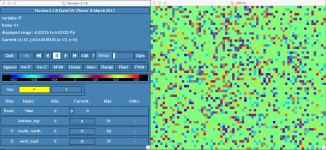Hello wrfhelp,
Recently, I found an interesting thing that there is a distinct difference in the value of the same variable between wrfinput and wrfout at initial forecast time. Intuitively, the values of meteorological variables don’t have to go through integral operations, so they should be the same as that in wrfinput file, but they don’t. I’m very curious that what processes and why cause this difference?
Thanks!
Zhiqiang
Recently, I found an interesting thing that there is a distinct difference in the value of the same variable between wrfinput and wrfout at initial forecast time. Intuitively, the values of meteorological variables don’t have to go through integral operations, so they should be the same as that in wrfinput file, but they don’t. I’m very curious that what processes and why cause this difference?
Thanks!
Zhiqiang



